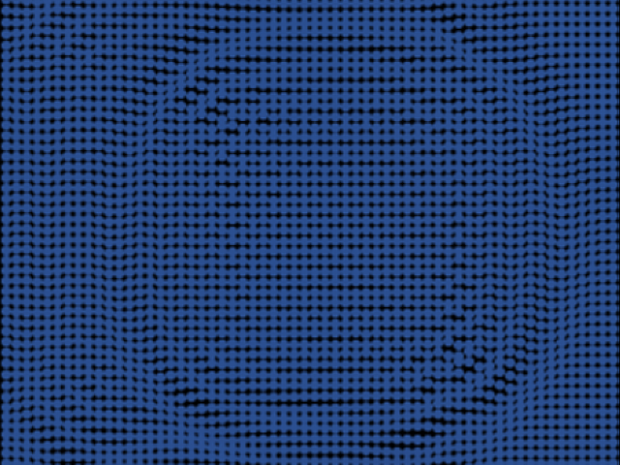
Photo: Sudhira H S/ Research Matters
One of the major scientific discoveries in the recent past has been the direct detection of gravitational waves, predicted by Einstein’s general theory of relativity about a century ago, by the Laser Interferometer Gravitational-Wave Observatory (LIGO) in 2016. The detection of short duration gravitational waves sent out during the cataclysmic merger of two black holes in a faraway galaxy, has stirred up considerable excitement as scientists expect more detection events from varied sources with advancements in detectors. A team of Indian astrophysicists led by Sushan Konar from the National Centre for Radio Astrophysics (NCRA), Pune, have now proposed a special class of neutron stars as candidates for targeted search for continuous gravitational waves with the next generation of instruments.
Gravitational waves are literally ripples in the fabric of space-time. Generated by any accelerating mass, these waves travel outward from the source, stretching and shrinking space as they go. The LIGO detectors are an engineering marvel with the capability to detect a change in the lengths of their arms 10,000 times smaller than a proton (10-18 m), caused by gravitational waves that pass through Earth. Completing an arc of theory, prediction and experimental confirmation that started a century ago, the direct detection of gravitational waves is a scientific milestone that opens another window to look out at the Universe and learn its secrets.
Although any accelerating mass generates gravitational waves, the ones that are detectable come from more energetic events in the Universe, involving massive objects and rapid accelerations like black hole mergers and continuous waves from spinning massive objects like neutron stars. It is the latter case that Konar and her collaborators have studied theoretically and published their findings in the recent issue of the journal Physical review D.
Konar has studied neutron stars all through her scientific career. “Neutron stars are extremely interesting because they can give us access to realms that we can't explore on earth. With their extreme densities, gravitational and magnetic fields, they let us study the behaviour of matter under conditions that we could never replicate in the lab”, says Konar about her fascination with these unusual stars.
Neutron stars are indeed exotic objects that are formed due to the collapse of the inner core of a star after the rest of it has blown off in a supernova explosion. Stars above a critical mass go on to collapse to form black holes, while their less massive counterparts end up being what are called neutron stars, for they are composed of neutrons. Atoms degrade into electrons and protons in the high-pressure environment, which then form neutrons through a process known as electron capture. These rapidly spinning objects with huge magnetic fields are the densest in the known universe with around two to three times the mass of our sun compressed into a body merely about ten kilometres in radius.
It has been understood that irregularities on the surface of neutron stars, much like mountains on the surface of the earth, would lead to considerable emission of gravitational waves. But these waves are too feeble to be ‘heard’ by detectors to be built in the foreseeable future. Hence, Konar & collaborators have considered another interesting feature on neutron stars, the accretion columns at the poles supported by strong magnetic fields, as a possible source of gravitational waves.
In binary star systems where two stars rotate around each other, if one of them is a dense object like a neutron star with a strong gravitational field, matter is stripped off of the companion. This material falls onto the neutron star in a process called accretion. The accreted matter radiates X-rays and is guided to the poles of the star by its magnetosphere. The matter forms columns above the polar regions, supported by the strong magnetic field. Konar et al. has theoretically estimated the amplitude of gravitational waves emitted through this mechanism in high mass X-ray binary systems (HXMBs) with huge magnetic fields and have confirmed that they may fall within the detectable limit of the next generation detectors, thus making these neutron stars viable candidates for directed search of gravitational waves.
Gravitational waves are the newest addition to our arsenal of tools for probing the universe, joining the ranks of electromagnetic radiation. They are faithful messengers that traverse vast stretches of space unimpeded and let us ‘see’ parts of the Universe that we could hitherto not probe with electromagnetic radiation. Looking for gravitational waves sent out by neutron stars would certainly let us learn more about their structure and properties, thus giving us new insights in fundamental physics, astrophysics and cosmology.

























